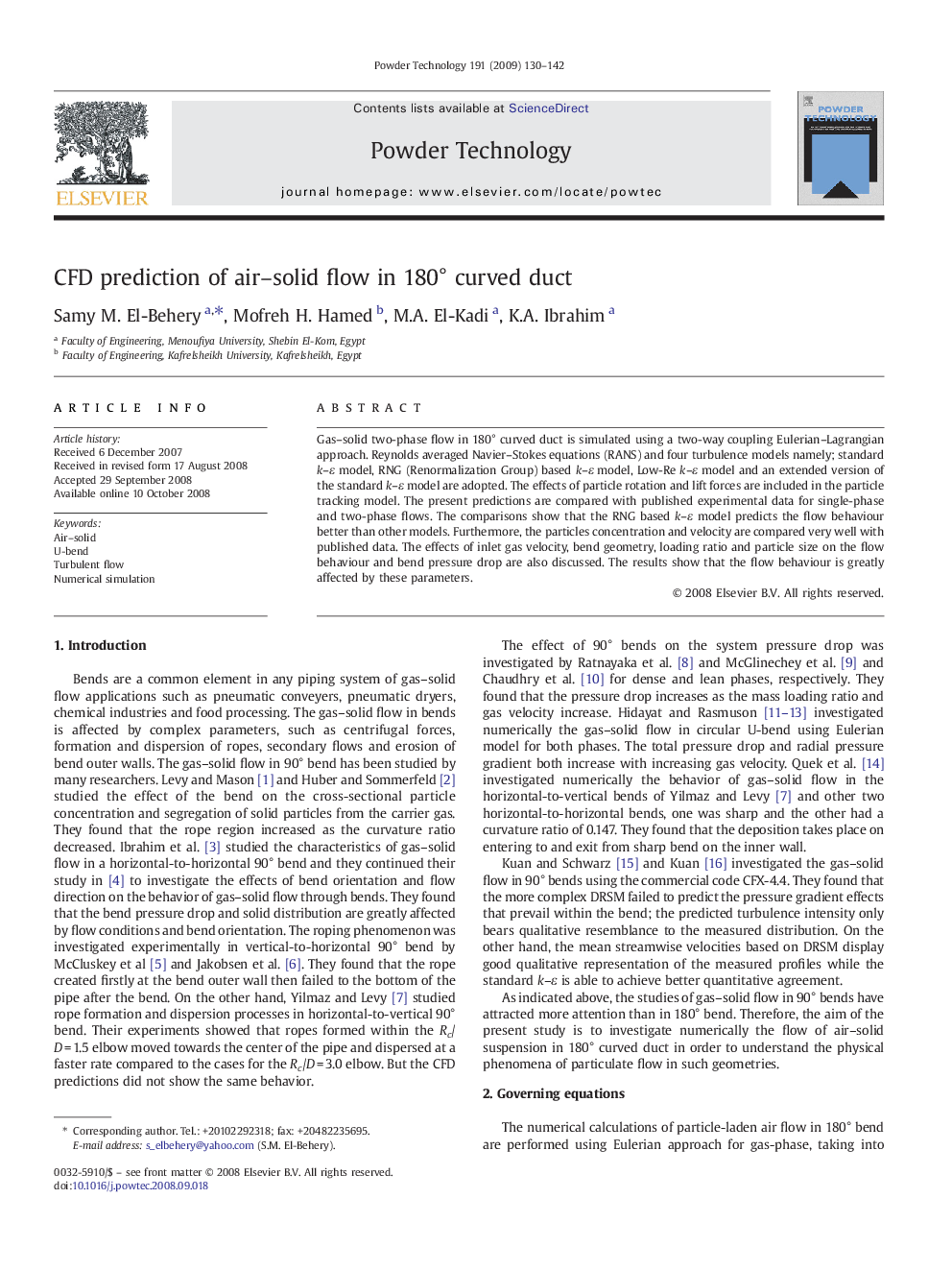| کد مقاله | کد نشریه | سال انتشار | مقاله انگلیسی | نسخه تمام متن |
|---|---|---|---|---|
| 238574 | 465763 | 2009 | 13 صفحه PDF | دانلود رایگان |

Gas–solid two-phase flow in 180° curved duct is simulated using a two-way coupling Eulerian–Lagrangian approach. Reynolds averaged Navier–Stokes equations (RANS) and four turbulence models namely; standard k–ε model, RNG (Renormalization Group) based k–ε model, Low-Re k–ε model and an extended version of the standard k–ε model are adopted. The effects of particle rotation and lift forces are included in the particle tracking model. The present predictions are compared with published experimental data for single-phase and two-phase flows. The comparisons show that the RNG based k–ε model predicts the flow behaviour better than other models. Furthermore, the particles concentration and velocity are compared very well with published data. The effects of inlet gas velocity, bend geometry, loading ratio and particle size on the flow behaviour and bend pressure drop are also discussed. The results show that the flow behaviour is greatly affected by these parameters.
Numerical simulation of air–solid flow through 180° curved duct show that, the pressure drop through the curved increases as the solid mass loading ratio, curvature ratio or gas velocity increases and it decreases as the particle diameter increase.Figure optionsDownload as PowerPoint slideEffect of curvature ratio, δ on the bend pressure drop, ΔPb and bend loss coefficient, kb.
Journal: Powder Technology - Volume 191, Issues 1–2, 4 April 2009, Pages 130–142